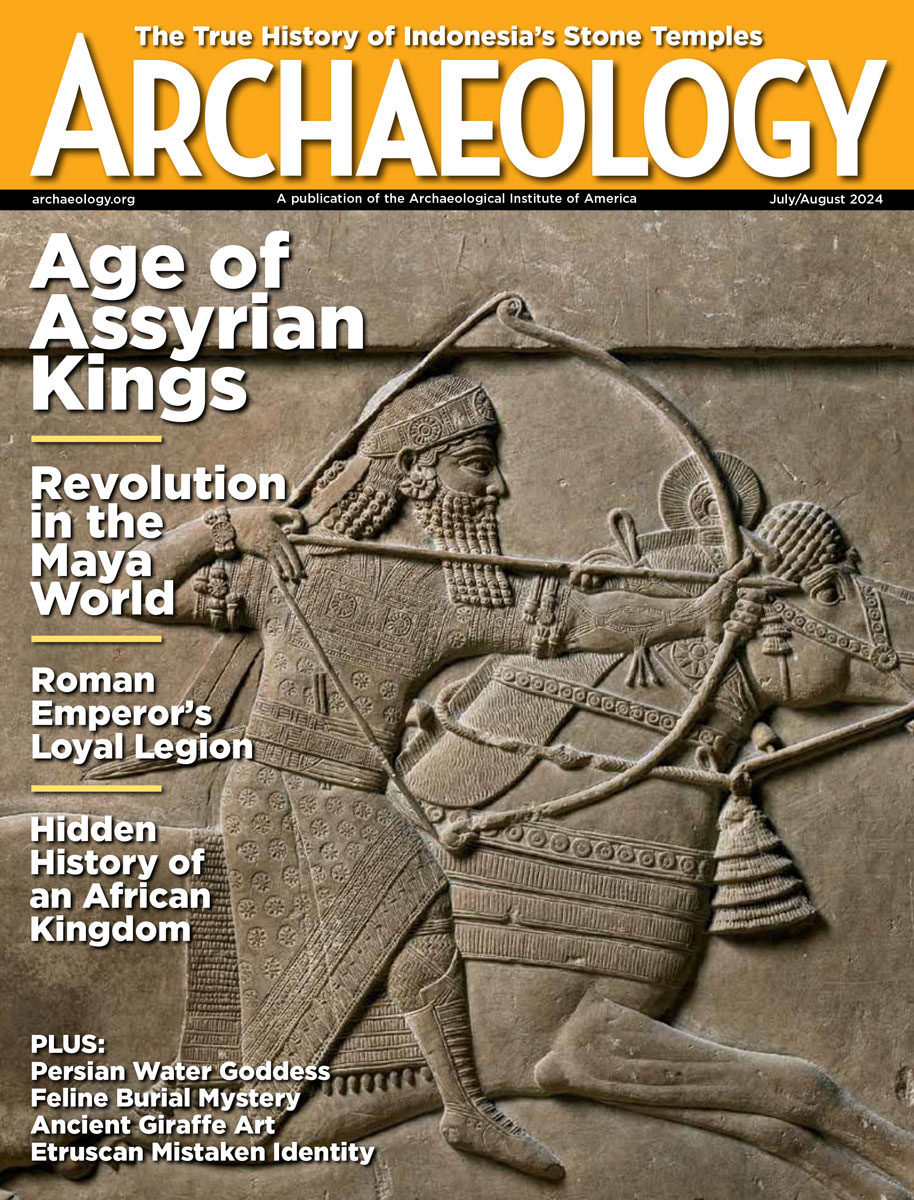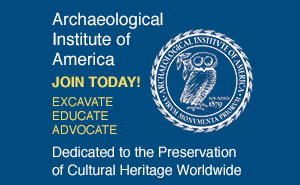Tuesday, May 8
May 8, 2012
Nearly half of the Confederate earthwork known as Fort Pocahontas has been removed by hand in order to reveal the southern half of James Fort, which was constructed by English colonists in 1607. The location is an ideal spot for fortifications, with views of Virginia’s James River. Archaeologists from Jamestown Rediscovery found an underground, timber-lined room where Confederate soldiers could hide during a bombardment. They also have recovered hundreds of seventeenth-century artifacts from the soil used to construct the earthworks, such as a paring knife and Elizabethan coins. “Destroying a Confederate fort to get to James Fort is a shame. But Virginia has lots of Confederate forts, but there’s only one James Fort. And it’s stunning what they’ve found there,†commented historical archaeologist Al Luckenbach.
A genetic study of the nuclear DNA of modern horses by researchers from Cambridge University indicates that horses were domesticated 6,000 years ago in the western part of the Eurasian Steppe. This corresponds with archaeological evidence, which includes traces of mare’s milk found in pots, graves for horses, and horses depicted in artwork. Previous studies of mitochondrial DNA, which is inherited only through mothers, had suggested that horses were domesticated in many different times and places. Now scientists think that wild mares were used to replenish domesticated herds as horsemen spread across Europe and Asia.
Roberta Gilchrist of the University of Reading has re-examined the unpublished excavation records made at Glastonbury Abbey in the 1950s and 1960s and obtained new radiocarbon dates from the site. Her work has shown that its glass-making furnaces date to the 680s, and are the oldest in Britain. Fragments of crucibles and blue-green glass have also been found. The glass will be analyzed to determine where the materials originated.
In Ocala, Florida, archaeologists working near the city hall found artifacts dating back to the eighteenth century and the foundation of what could be the old Ocala courthouse, which was built before the Civil War. The city was destroyed by fire in 1883. “The area where they are working is the oldest part of the city of Ocala,†said Willet Boyer of the College of Central Florida.
- Comments Off on Tuesday, May 8
Monday, May 7
May 7, 2012
Plaque removed from ancient teeth could provide information about early diets without destroying any precious bone samples. Scientists have analyzed the amount of carbon and nitrogen in dental calculus taken from 58 historic skeletons buried in Spain’s Cathedral of Santa Maria with a mass spectrometer. The results were similar to tests that use bone collagen. “It could save a lot of time and effort, and also allow for analysis when things like hair, muscle, and nails are no longer available,†said G. Richard Scott of the University of Nevada.
In Qatar, archaeologists have uncovered a human burial at the 7,500-year-old site of Wadi Debayan, where they have been conducting a remote-sensing survey. Wadi Debayan was occupied for about 3,000 years and is known for its fire pits and post holes. “The grave was a very surprising find that came out of one of the several test pits. We have seen some pieces of the tibia, one of the two leg bones, which shows the skeleton is in a crouched position typical of Neolithic burials,†said Richard Cuttler of the University of Birmingham.
More than 150 glass-plate negatives taken in India at the time of the British Raj have been discovered in a shoebox at the Royal Commission on the Ancient and Historical Monuments of Scotland. Archivists say that some of the images were taken in 1912, when King George V and Queen Mary visited Calcutta, but they don’t know who took the images, or how the shoebox ended up in the collection. “Some of the most interesting discoveries can be made in the most unlikely of places,†said architectural historian Claire Sorensen.
A 1,500-year-old Buddhist temple has been unearthed in the Tarim Basin area of China’s Taklimakan Desert. The temple dates to the early spread of Buddhism into China, and its three square-shaped corridors reflect Indian architecture. A large pedestal at the site suggests that there was a Buddha statue within the structure that was at least nine feet tall. Wall paintings show the Buddha’s feet, Buddhists, and auspicious animals. Residential structures, kilns, and coins were also found. Wu Xinhua of the Chinese Academy of Social Sciences expects to uncover a scripture hall, a stupa, and additional housing.
Two men went hiking and “looking for artifacts†in a New Jersey county park over the weekend. One of them ended up trapped by a boulder in a shallow hole. It took two teams of rescue personnel and a system of ropes and pulleys several hours to free the man, whose legs were seriously injured.
- Comments Off on Monday, May 7









